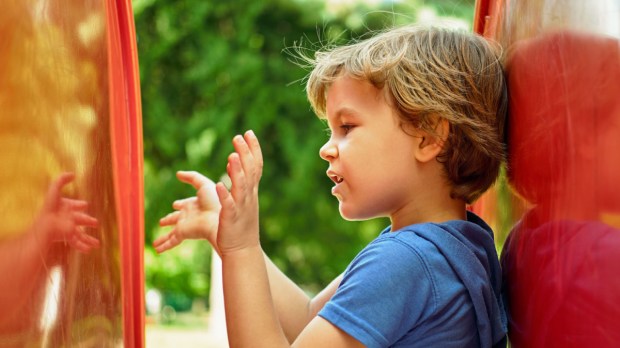When Blandine heard her 5-year-old daughter talking to herself in her room one day, she didn’t pay attention. But when Marie broke a glass and accused “Bobby” by pointing her finger at empty space, Blandine understood that her daughter had a new friend … an imaginary one. This phenomenon, which is quite normal, affects up to two children out of three. Imaginary friends, who can be invisible or sometimes represented by a toy or a doll, can be very evident or barely noticeable.
They have various psychological functions. An imaginary friend can help to fill introverted children’s solitude, especially if there’s a big age difference between them and their siblings or if they’re an only child. Thanks to an imaginary friend, a child gets to act out friendships that serve as training to understand and better master social relationships. The fictional character is also a channel through which children express their thoughts and feelings. Additionally, it can be their scapegoat when they make a mistake, say bad words, or want to do as they please.
“For children, their imagination is a way to filter reality and protect themselves when they don’t like it,” child psychiatrist Stéphane Clerget tells Aleteia. And to reassure worried parents, he adds, “It’s part of normal development. This friend usually disappears when they enter elementary school, around 6-7 years old.”
How to react to the presence of an imaginary friend
“For a very long time, we were unable to have other children. This must have had an impact on our son, Ambrose. At age 4, he started talking about a certain George. At school, the teacher thought it was his little brother,” recalls Alice.
Most children know that their friend doesn’t really exist and that others don’t see him. But some, especially younger ones, firmly believe in them.
In this case, it’s important not to scold the child or tell him that his imaginary friend doesn’t exist. “You accept it, you listen to your child talk about it. And we take into consideration what he makes his friend say because it’s actually what he wants to say. For example, if the friend is afraid of ghosts at night, we take it into account,” explains Stéphane Clerget.
So yes, accept the imaginary friend, but without giving it too much importance. “Marie told us that Bobby likes chocolate cereal in the morning. Now I’m wondering if I should add a plate for Bobby at breakfast,” says Blandine.
“You shouldn’t pretend he really exists. Don’t put a plate at the table and don’t talk to this friend. As well, don’t bring it up if the child doesn’t talk about it,” answers Stéphane Clerget.
When the imaginary friend misbehaves
“At home, our son Augustin’s imaginary friend Paul is a rebel. He systematically contradicts everything we say to him,” says Antoine. In reply, Stéphane Clerget reminds us of another important rule: Make the child responsible and remind him of the rules when he uses his imaginary friend.
“If he blames his friend for his nonsense, we remind him of the rules. If he says, ‘It’s not me, it’s Joey who broke the lamp with the ball,’ it’s a way for him to say that he didn’t do it on purpose. We then tell him that it doesn’t matter, you shouldn’t throw the ball in the living room.” The same is true when the imaginary friend “gives him permission” to do things that his parents have forbidden. “It’s always necessary to explain the reasons for prohibitions and to remind the child that it’s the parents who make the rules at home and not Joey,” says Stéphane Clerget.
Once the parents have learned how to react properly to their child’s imaginary friend, the presence of this new family member should be no cause for alarm. There’s nothing negative about it.
However, “it may be a good idea to seek a specialist’s opinion if this imaginary friend persists beyond the age of 7-8 years, and especially if the child communicates only through this friend and has no real friends, or if he or she has associated problems such as hallucinations,” concludes Stéphane Clerget.



